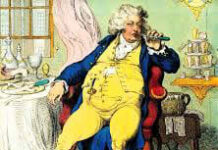Stream of Consciousness Novel | Chief Characteristics
Stream of Consciousness Novel | Chief Characteristics
Stream of Consciousness Novel is an improved and delicate form of Psychological Novel. It depicts the flux and inner feelings and thoughts of human psyche in a more sophisticated way. The Stream of Consciousness Novel may be defined as a genre of novel that portrays the incessant and often incoherent feelings, thoughts, impressions, emotions, memories, mental images, speculations, meditations, and reveries of human mind that keep changing but flowing from moments to moments and which are generally kept untold in day to day practical life.
The Stream of Consciousness Novel is based on the Freudian Psychological theory that the human mind when not concentrating on a particular action or subject, keeps thinking, evaluating, judging, planning, or contriving a variety of subjects, episodes actions at random where past, present and future cross and recross his mind without the logic of continuity and cohesion. This genre of novel is sometimes termed as Novel of Interior Monologue because this genre of novel expresses the inner workings of a person in a subjective way. The Stream of Consciousness Novels are expressionistic in character and spirit.
This genre of novel comes into being during the first half of the twentieth century. Dorothy Richardson, James Joyce, Virginia Wolf and a few others are pioneers in writing this genre of novels. For example, mention may be made of Dorothy Richardson’s Pointed Roofs, Virgina Wolf’s Mrs. Dalloway, To the Light House; James Joyce’s A Portrait of the Artist as a Young Man and Ulysses. Though their works vary in degree and standard yet there are some striking features (characteristics) that are traced to be common to their novels. They are-
- The Stream of Consciousness novel deals with the inner workings of the complex human mind.
- There is neither a specific plot nor a specific story but fragments of episodes and events combined together incoherently.
- There are characters but no characterization, it reveals only the inner workings of a character that sees and observes things subjectively.
- There is no structure- neither a specific beginning nor a logical ending.
- There is some use of symbols that symbolize the character’s inner feelings and state of mind.
- By investigating, analyzing or reflecting on the concerned episodes or events the hero develops self-education or intellectual caliber.
- The language is often prosaic, sometimes emotional or poetic, hasty, and sometimes chaotic. 0 0 0.
N. B. The article originally belongs to the book entitled ‘ The Laws of Literature‘ by Menonim Menonimus
Books on Literary Criticism by M. Menonimus:
- World Short Story Criticism
- World Poetry Criticism
- World Drama Criticism
- World Novel Criticism
- World Essay Criticism
- Indian English Poetry Criticism
- Indian English Poets and Poetry Chief Features
- Emily Dickinson’s Poetry-A Thematic Study
- Walt Whitman’s Poetry-A Thematic Study
- Critical Essays on English Poetry
- Tawfiq al-Hakim’s Novel: Return of the Spirit-An Analytical Study
- Tawfiq al-Hakim’s Novel: ‘Yawmiyyat Naib Fil Arayaf’-An Analytical Study
- Analytical Studies of Some Arabic Short Stories
- A Brief History of Arabic Literature: Pre-Islamic Period (500 AD-622 AD)
- A Brief History of Arabic Literature: Early Islamic Period (622 AD-661 AD) …
Related Search:











